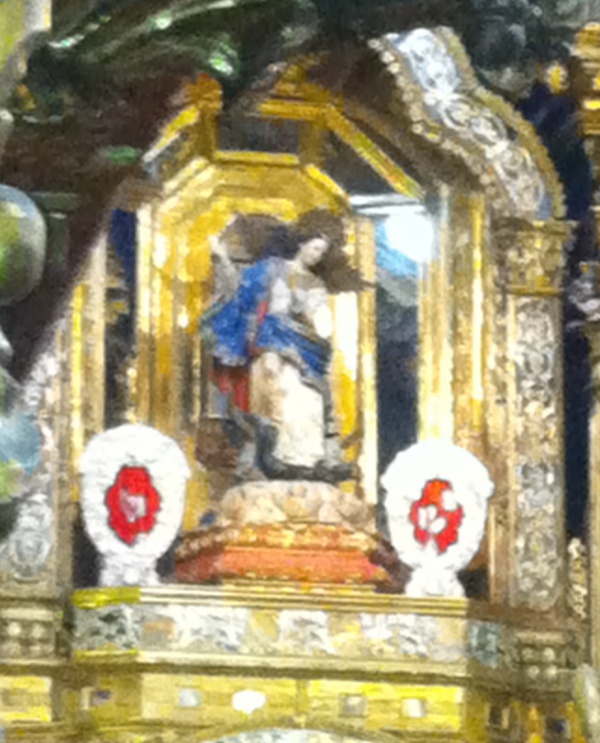Facts About Virgin of Quito
The Virgin of Quito, also known by various names including the Virgin of the Apocalypse, Winged Virgin of Quito, Dancing Madonna, and Legarda's Virgin, is a captivating wooden sculpture masterfully crafted by the artist Bernardo de Legarda. This renowned piece exemplifies the Quito School of art, which flourished during the Spanish colonial period in Quito, Ecuador. Completed in 1734, the original sculpture, portraying the Lady of the Immaculate Conception, is housed at the Church and Convent of San Francisco in Quito.
Standing 120 centimeters tall, the sculpture draws inspiration from the biblical Woman of the Apocalypse as described in the Revelation of Saint John. The Virgin is adorned with symbolic elements such as the sun, a crescent moon at her feet, and a crown with twelve stars. She is depicted vanquishing evil, equipped with silver wings and a heavy silver chain. A distinctive feature of this sculpture is the Virgin's mestiza appearance, setting her apart from traditional European depictions of Mary.
Another version of the Virgin of Quito, also by Legarda, is revered at the Cathedral Basilica of Our Lady of the Assumption in Popayán, Colombia. This larger sculpture, known as Our Lady of the Assumption of Popayán, boasts a more dynamic pose and includes additional symbolic elements tied to the Woman of the Apocalypse.
Legarda's original sculpture gained immediate acclaim for its beauty and was swiftly placed on the main altar of the church. It is often referred to as the "Dancing Virgin" due to the sense of movement imparted by the Virgin's hands and dress. Numerous replicas of the Virgin of Quito exist throughout Latin America, including one by Caspicara at the Brooklyn Museum. The most notable replica is the Virgin of El Panecillo, a towering 45-meter statue in Quito, created by Agustín de la Herrán Matorras in 1976.

 Colombia
Colombia